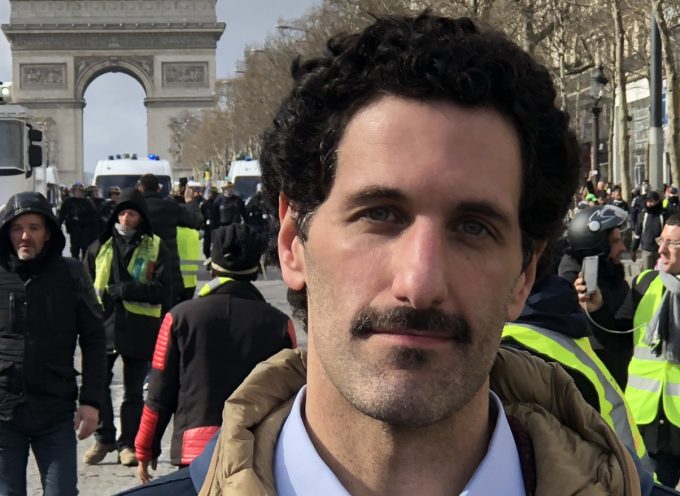It should be clear: the CR was the Great Leap Forward 2.0 China had learned from the mistakes, and improved. We can fairly say that their Belt and Road Initiative is a Great Leap Forward 3.0, and one which is so great it is incorporating most of Eurasia.
We can see the transition from a China where the vanguard party was everything like industrial workers in 1917 Petrograd to a better socialism, because it democratically empowered worker/citizens. It should be no surprise that it worked so well socialism is something which simply must evolve and grow because it is so very new treating 19th century Marx as though he was a divine apostle is false, absurd and a guarantee of failure. Conversely, capitalism-imperialism has had 300 or 3000 years (depending on your definition) to grow, and it is not surprising that it has culminated into its most heartless, most inequality-producing format neoliberal capitalism.
Whereas the Great Leap Forward was a hysterical-with-happiness effort to wipe away more than a century of imperial and/or fascist retardation, locals in Jimo calmly and collectively decided what they needed the fruits are China's impressive status in 2019.
A revolution in rural medical care, which appeared for the first time
Again, this is the human capital built up during the CR which produced the 1980s boom. Sickness and infirmity both your own and that of your children, family and friends is not just personally debilitating but damaging to the economy.
The CR led to the denunciation of the urban-only medical care program, which was an improvement from the pre-1948 days, but clearly not the finished goal of socialist revolution. "Mao denounced the people's hospitals aschengshi laoye yiyuan (hospitals for urban lords only)."
Thanks to the CR's refreshing of the collective mentality: "Each villager paid fifty cents annually to the village clinic, which would then provide villagers with rudimentary free medical care for a whole year. By 1970, 910 villages 93 percent of all villages had set up their own village clinics and all had rudimentary medical insurance policies for villagers. The rural 'barefoot doctors' who staffed village clinics were mostly returned educated rural youth, who had received rudimentary medical training while in high schools." It doesn't sound like much, but it's better than the previous witch doctors who were often publicly shamed for the tragedies caused by the false claims of voodoo and Han notes the "barefoot doctors" worked under the supervision of real doctors.
"If a villager fell ill and needed to be hospitalized, the village would try to pay for his or her medical bills. If the village could not pay, the commune would help. If the medical bills became too big for both village and commune, the hospital would waive the charges. " To be sure, the rural cooperative medical system was of low quality. " But it was the best system of medical care villagers in Jimo had ever had and it provided villagers with important services and peace of mind."
Again, human capital was created and preserved, allowing Chinese humans to flourish in the 21st century.
A revolution in cultural respect, not a revolution of cultural violence
In an anecdote which shows how gender equality is far more advanced under socialism than capitalism (of course, as is ethnic equality), Han relates an anecdote of twin brothers who abused their wives getting shamefully paraded, but also their mother because she was believed to be the instigator of the abuse.
Han also discusses something the West's art mavens love to decry with far greater fervor than the continued existence of human poverty: how cultural treasures were lost at the start of the CR, which attacked the "four olds": old thoughts, old culture, old traditions and old habits.
Han relates how it was the superstitious funeral and wedding ceremony shops which were the main victims in Jimo in many ways the CCP was trying to replace the old polytheism with communism.
But what Han explains is that as the CR progressed, and rural students were given more funds, time and consideration, rural students began to enjoy subsidized travel outside of their village. For many this was the first time poor rural students had ever had an opportunity to widen their vision of the world, and they immediately realised the error of naively destroying genuine cultural artefacts.
"In Jimo County, the Cultural Revolution took a dramatic turn after young people returned from trips to Beijing where they gained new perspectives. The independent mass associations emerged (Rebel Red Guard Faction), and destruction of the si jiu (four olds ) stopped after students returned from their travels."
It seems the lesson was very quickly learned the "four olds" should be regarded as quaint relics, and even worth protecting as part of China's cultural heritage, but they should no longer be feared and thus destroyed, because idols have no power (which was the message of Abraham and monotheism). That point of view seems difficult to grasp when the "four olds" are lorded over you your whole life, and you think that they are all-dominating instead of being paper tigers.
Next Page 1 | 2 | 3 | 4 | 5 | 6
(Note: You can view every article as one long page if you sign up as an Advocate Member, or higher).





